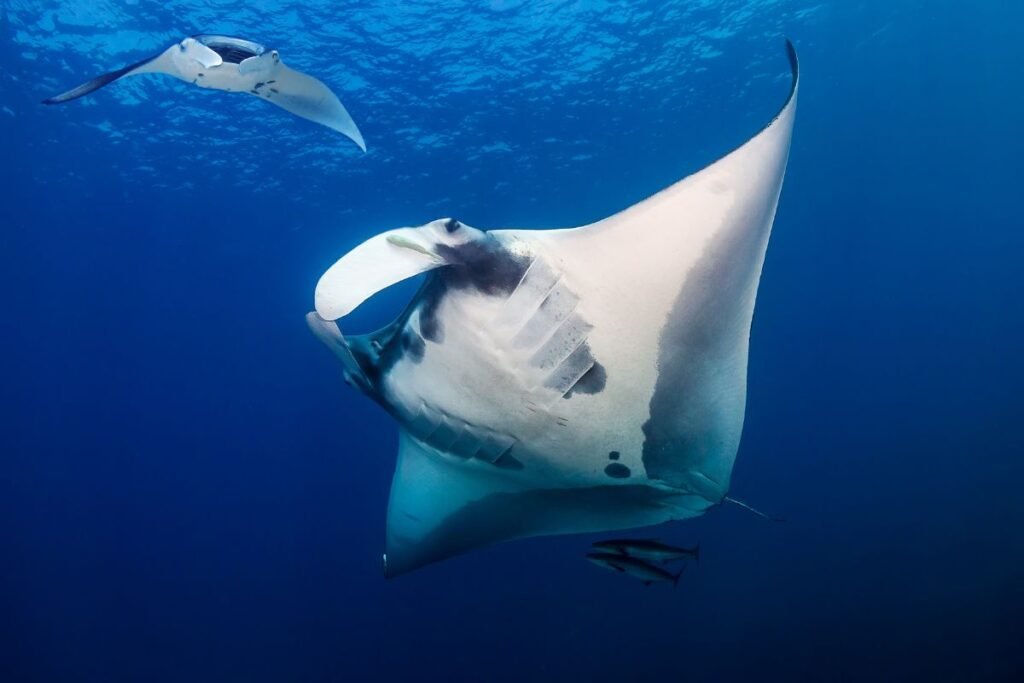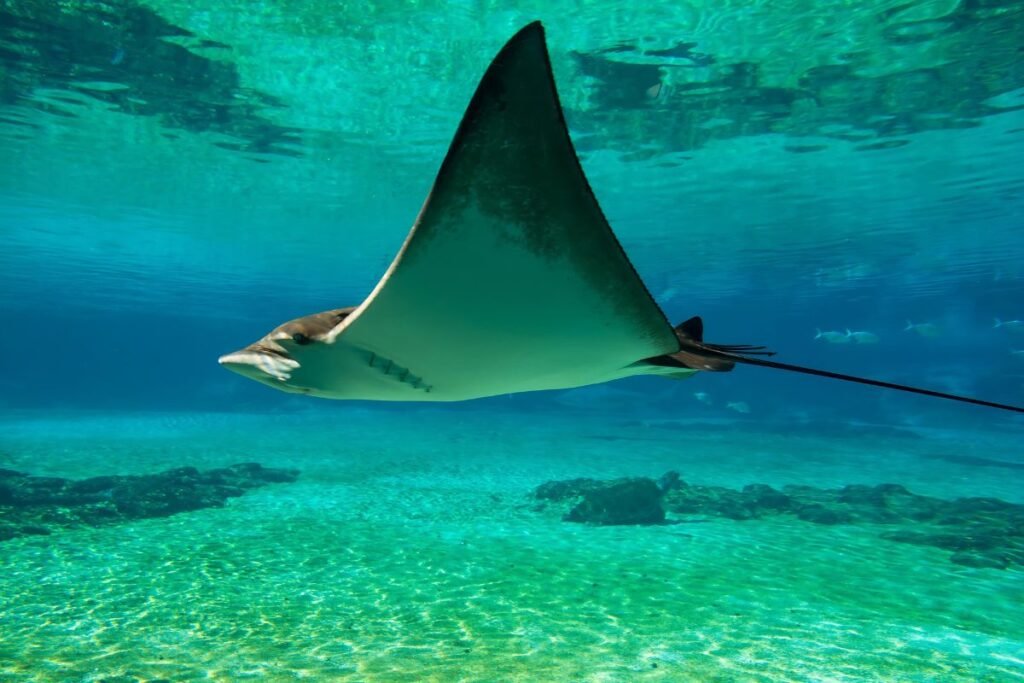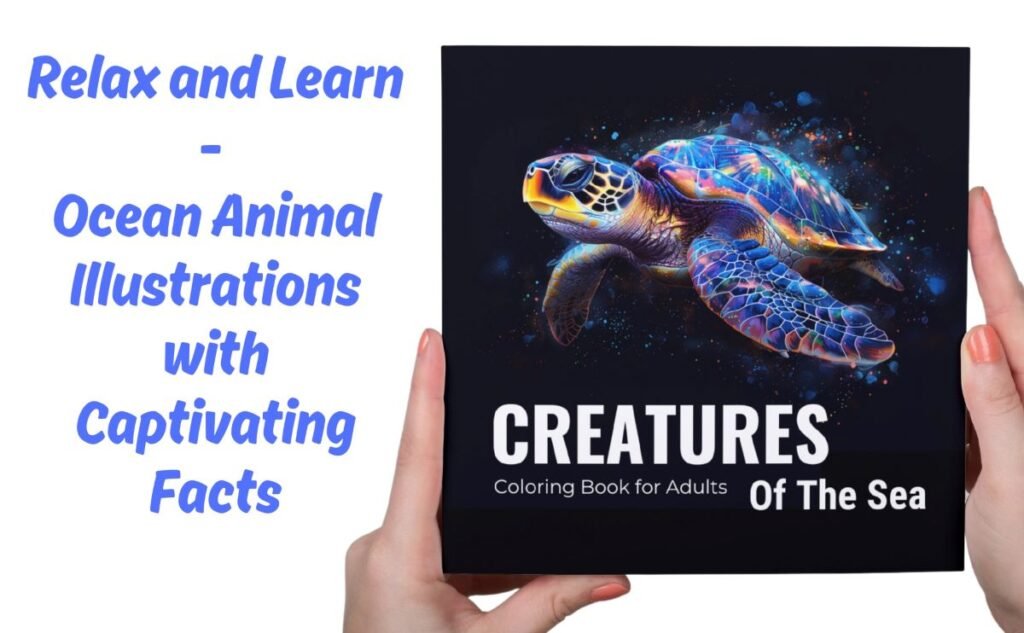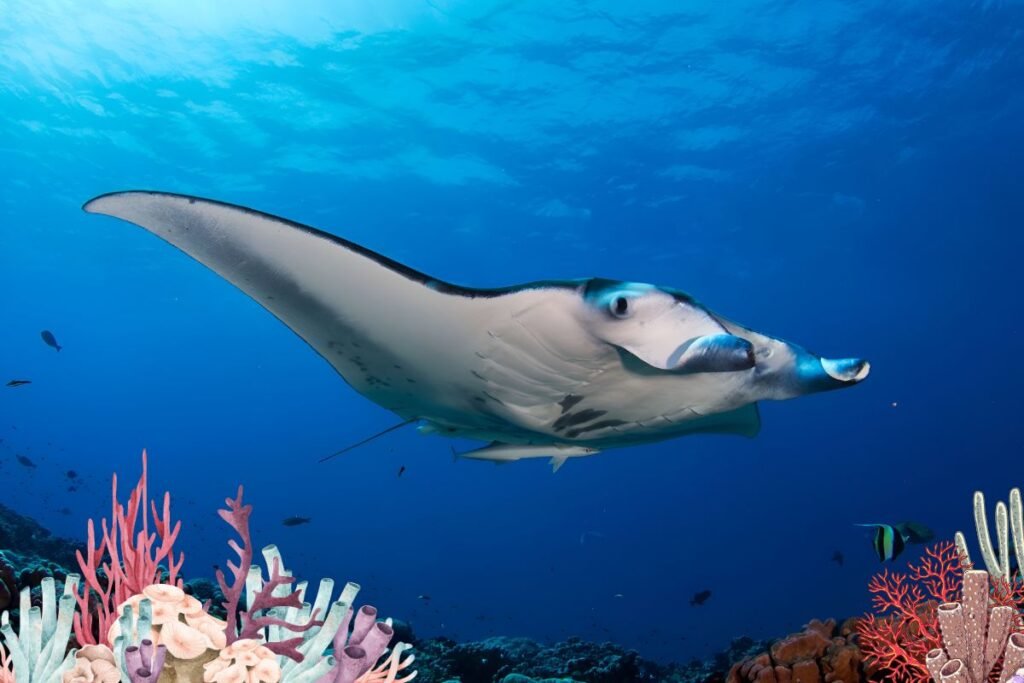Have you ever wondered about the gentle giants gliding gracefully in the ocean’s depths?
With their majestic presence and fascinating behaviors, oceanic mantas captivate marine enthusiasts and casual observers alike. Let’s dive into the world of these incredible creatures and uncover the mysteries that make them so extraordinary.
Table of Contents
ToggleWhat is an Oceanic Manta?
The oceanic manta, also known as the giant manta ray, is a species of ray belonging to the genus Manta within the family Mobulidae. Scientifically termed Mobula birostris, these rays are recognized for their immense size and distinctive body shape.
Physical Characteristics
Size and Weight
Oceanic mantas are truly colossal. They can reach a wingspan of up to 23 feet (7 meters) and weigh as much as 2,980 pounds (1,350 kilograms). Imagine a creature as long as a small bus and as heavy as a car—it’s no wonder they’re called giants!
Coloration and Patterns
Their coloration is typically dark on the top and white underneath, with unique patterns on their bellies that are as individual as fingerprints. These patterns help researchers identify and study individual mantas in the wild.

Habitat and Distribution
Global Range
Oceanic mantas are widespread, inhabiting tropical, subtropical, and temperate waters across the globe. They are often found in the Atlantic, Pacific, and Indian Oceans, making extensive migrations to find food and breeding grounds.
Preferred Environments
These mantas prefer open ocean habitats but are also known to frequent coastal areas, particularly around coral reefs and offshore islands. They thrive in warm waters and are often spotted near the surface, gracefully gliding through the waves.
Behavior and Social Structure
Diet
Oceanic mantas primarily feed on plankton, tiny organisms that float in the ocean. They also consume small fish and crustaceans, but their diet mainly consists of microscopic sea creatures.
Feeding Mechanisms
Mantas employs a fascinating feeding technique called filter feeding. They swim with their mouths wide open, using specialized gill rakers to trap plankton while expelling water through their gills. This efficient system allows them to consume large quantities of food with minimal effort.
Group Dynamics
While often seen alone, oceanic mantas can also be found in small groups, especially during feeding or mating seasons. These groups are known as schools or fleets, and their social structures are a subject of ongoing research.
Communication
Mantas communicate through body language and by using their cephalic fins, which are the horn-like structures on their heads. These fins help direct food into their mouths and can also signal intentions to other mantas, such as during courtship or when navigating around each other.

Reproduction and Lifespan
Mating Behavior
Mating among oceanic mantas is a captivating spectacle. Males chase females in what is known as a “mating train,” showcasing their agility and stamina. The chase can last for hours, with the female eventually selecting a mate based on his persistence and fitness.
Gestation and Birth
Once mating occurs, the female manta undergoes a gestation period of about 12-13 months. She then gives birth to a single pup, which is already quite large—about 4-5 feet (1.2-1.5 meters) across. The pup is independent from birth, though it stays close to the mother initially.
Lifecycle
Oceanic mantas are believed to live for around 20-30 years, though some studies suggest they could live even longer. They grow slowly and reach sexual maturity between 8-10 years of age, making them vulnerable to threats that affect their long-term survival.
Threats and Conservation
Human Impact
Unfortunately, oceanic mantas face numerous threats, primarily from human activities. Overfishing, entanglement in fishing gear, and habitat destruction pose significant risks. Mantas are also targeted for their gill plates, which are used in traditional medicine.
Natural Predators
While adult mantas have few natural predators, their young can fall prey to large sharks and killer whales. Their size and agility, however, offer some protection against these threats.
Conservation Efforts
Conservationists are working tirelessly to protect oceanic mantas through research, legislation, and public awareness campaigns. Protected marine areas and international trade regulations are crucial steps in ensuring their survival.
The Importance of Oceanic Mantas
Ecological Role
Oceanic mantas play a vital role in marine ecosystems. As filter feeders, they help maintain plankton populations, which are the foundation of the oceanic food web. Their presence indicates a healthy marine environment.
Tourism and Economy
Mantas are a significant draw for eco-tourism. Dive sites known for manta sightings attract thousands of tourists annually, contributing to local economies and promoting marine conservation through sustainable tourism practices.
Interesting Facts
– Oceanic mantas have the largest brain-to-body ratio of any fish, indicating high intelligence.
– They can leap out of the water, a behavior known as breaching, possibly to remove parasites or communicate.
– Mantas can travel long distances, with some recorded migrations covering over 1,000 miles.
– Each manta’s belly pattern is unique, like a fingerprint, allowing scientists to track and study them.
– Despite their size, mantas are gentle and pose no threat to humans, making them a favorite among divers.
Conclusion
Oceanic mantas are magnificent creatures that inspire awe and wonder. Their graceful movements, impressive size, and crucial ecological role highlight the importance of protecting these gentle giants. By understanding and appreciating oceanic mantas, we can work towards a future where they continue to thrive in the world’s oceans.

FAQs
Q: How long do oceanic mantas live?
A: Oceanic mantas can live for around 20-30 years, though some studies suggest they might live even longer.
Q: What do oceanic mantas eat?
A: Oceanic mantas primarily feed on plankton, but they also consume small fish and crustaceans.
Q: Are oceanic mantas dangerous to humans?
A: No, oceanic mantas are gentle giants and pose no threat to humans. They are curious and often interact peacefully with divers.
Q: Where can you typically find oceanic mantas?
A: Oceanic mantas are found in tropical, subtropical, and temperate waters across the globe. They prefer open ocean habitats but are also seen around coral reefs and offshore islands.
Q: What are the main threats to oceanic mantas?
A: The main threats include overfishing, entanglement in fishing gear, habitat destruction, and targeted fishing for their gill plates used in traditional medicine.


